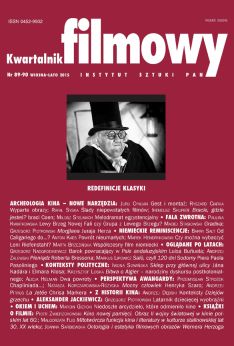Juraja Herza sposób na stylizację rzeczywistości
Juraj Herz's Method for Styling Reality. The case of Morgiana
Author(s): Grzegorz PiotrowskiSubject(s): Theatre, Dance, Performing Arts
Published by: Instytut Sztuki Polskiej Akademii Nauk
Keywords: Herz Juraj; Czech New Wave
Summary/Abstract: Juraj Herz’s "Morgiana" (1972) is considered to be the last film of the Czech New Wave. Piotrowski points to the ambiguity of this attribution: although Herz’s film is the fruit of a certain “school” and its aesthetic consequence, it was made under the conditions of standardisation, introduced by the communist government of Czechoslovakia after the crushing of the Prague Spring (it meant the end of artistic freedom, the fall of cinema and the return to the aesthetics of socialist realism). This is evidenced by the critical reception of "Morgiana", depreciated as – merely – “a poetic horror” and “romantic parable” about the victory of ideal good over blatantly perfect, hideous evil. In Herz’s film nothing is clear: the film, in part due to the double role of Iva Janžurová, appears as a palimpsest, suggesting that the film world is a metaphor, and remains in opposition to the reality outside of film. Piotrowski shows that the masterfully put together, multilevel stylisation is in "Morgiana" a medium of cinéma d’auteur, a source of distance and bitter irony and a mask concealing a political and ethical message.
Journal: Kwartalnik Filmowy
- Issue Year: 2015
- Issue No: 89-90
- Page Range: 102-112
- Page Count: 11

